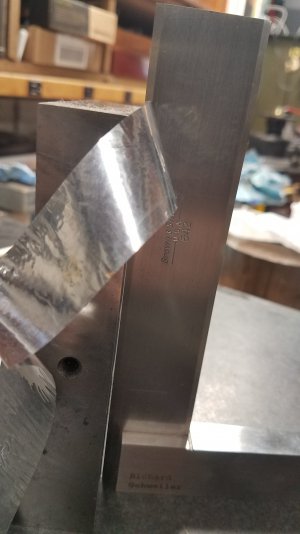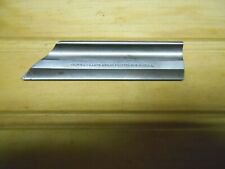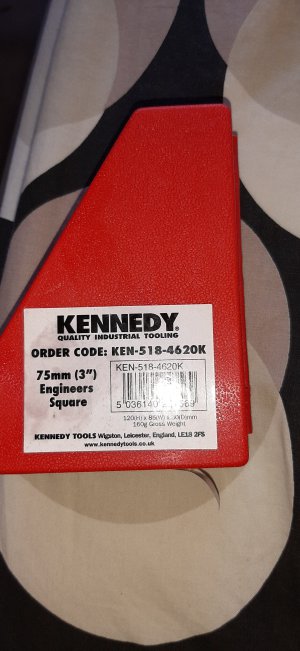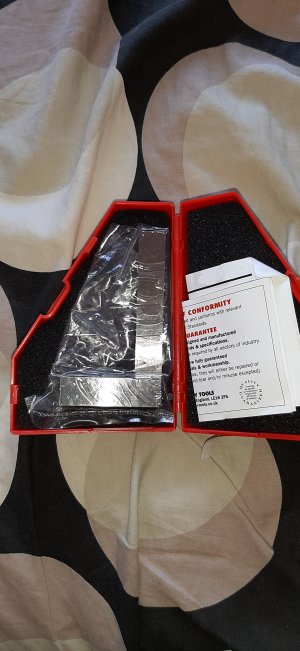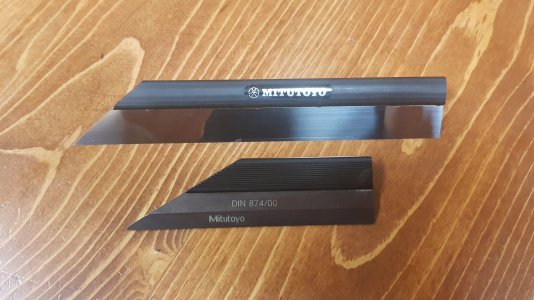- Joined
- Aug 1, 2019
- Messages
- 337
Using the corner of of your caliper is probably not a problem because the bar on a caliper should be straight but I have seen guys use the corner of a bar that was bowed, that won't give you a true reading! All of my good squares and straight edges have beveled edges on them. I use a piece of .0005" Mylar as a test strip between the blade of my tool and the surface that I am checking. The picture shows one of my good squares against one of my good angle plates with a .0005" Mylar shim between the two. It is amazinghow much light comes through that .0005" gap! Remember also that if you are checking a ground or shiny surface, the gap of light appears twice as wide as it actually is because of reflection.